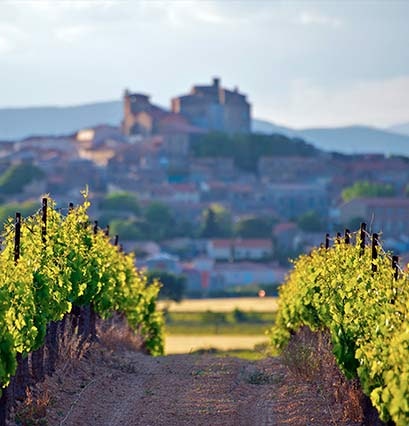
Languedoc
In this area covering the French départements of Gard, Hérault and Aude, the Greeks planted vines as early as the 5th century BCE and were followed by the Romans. Vines were replanted after the phylloxera crisis and Languedoc now has 35,000 hectares of vineyards, making it one of France’s largest wine regions today. In terms of conditions, it offers great soil diversity and a Mediterranean climate influenced by the Mistral and Tramontane winds.
Languedoc producers have managed to define a real common identity for themselves, despite the wide range of appellations on offer. There are wines without a geographical indication (GI), as well as PGIs (IGP) and PDOs (AOP). This AOP category can be further divided into wines with the Languedoc regional AOP, sub-regional AOPs, such as Saint-Chinian, Limoux, Pic Saint Loup, and Terrasses du Larzac, and even smaller village appellations like Boutenac or Minervois La Livinière. Languedoc also produces lightly fortified wines known as “vins doux naturels”.
In Languedoc, most wines are blends made from a number of varieties. Syrah is the most widely planted grape variety for reds – 75% of the region’s production is red – followed by other Rhone and Bordeaux varieties and Mourvèdre. The most widely planted white grape is Chardonnay whose plantings have grown from 1,000 to 14,400 hectares in 20 years. Other white wine grapes include Marsanne and Roussanne.
Iconic names include Grange des Pères, Mas Daumas Gassac and Peyre Rose (Marlène Soria).















































































